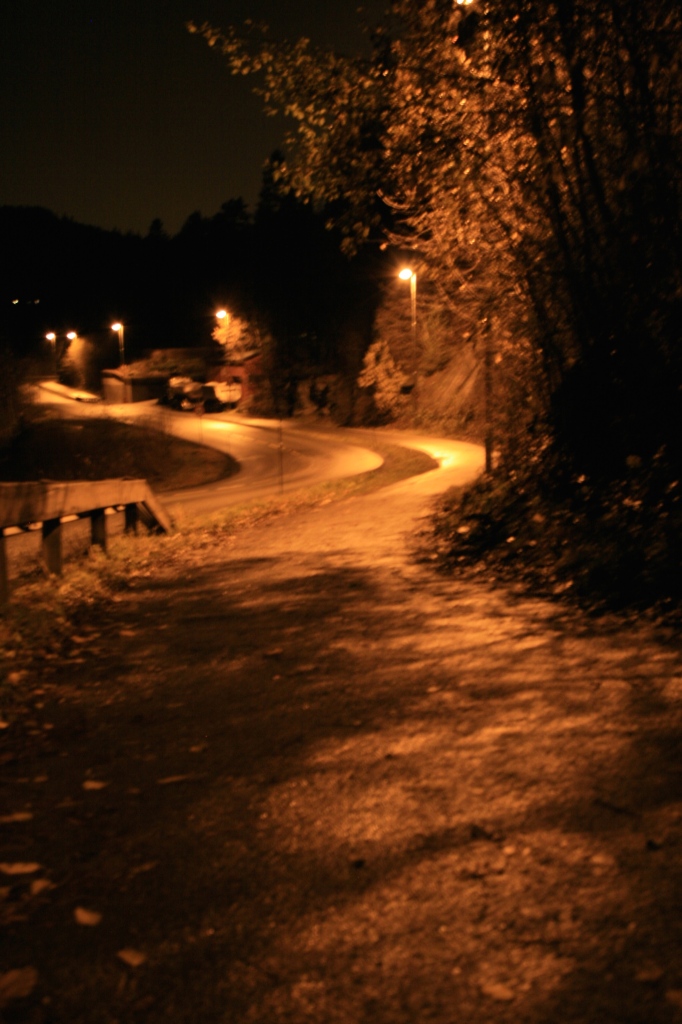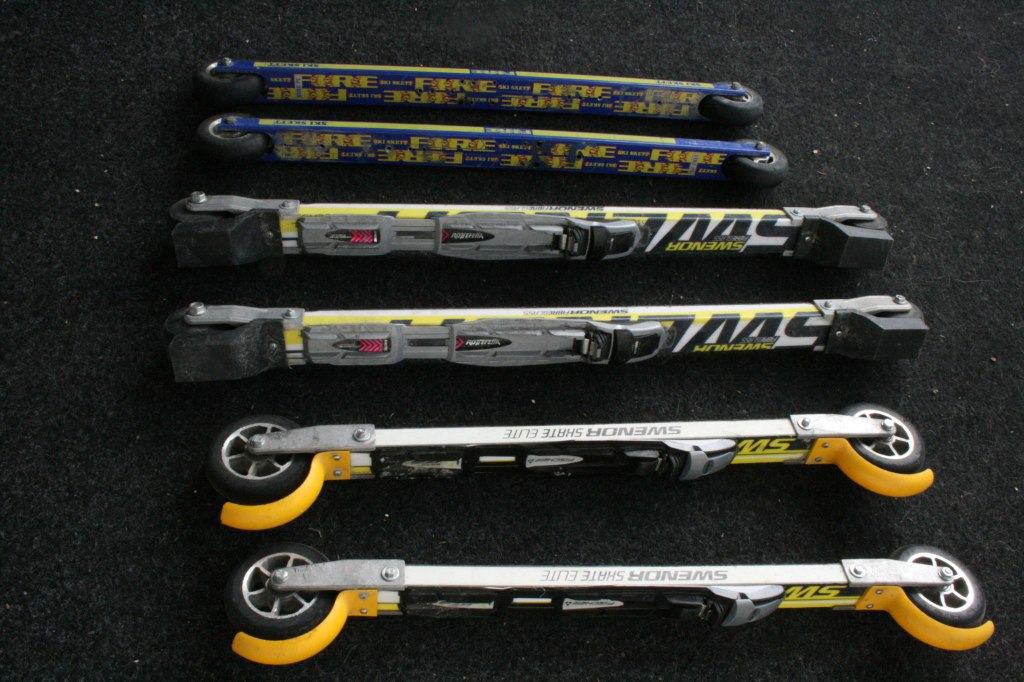
In the northern hemisphere it´s soon summer. Many xc-skiers are for sure looking out the window saying goobye to the snow. Some of those are at the same time saying -Hi! Long time no see, to their rollerskis.
And some others might consider buying a pair. And especially the last group of people ask the most common questions: How do you stop on rollerskis? Don´t they go incredibly fast? What about the people driving beside me, will they tolerate a rolling cyborg with metal weapons sticking out from their hands? Best to back out?
No no.
I feel that I myself have covered a sufficient distance til at least have gained some experiences that I gladly share. Here´s a recipe for a sccuessful roller ski summer and autumn:
PS! Keep in mind it´s still solely your own responsibility to avoid all sorts of mishappenings, trouble and accidents. Check always out local law, rules and regulations.
- Always use helmet.
- Walk or run downhill, if you´re sceptic to the speed you´ll build up on the skis. This should not feel embarrasing and it´s a quick operation to release and attach the skis again. And running is definetively also excercise.
- Yes, you can break on roller skis. This is something that I wondered about myself, and the most frequent question I get when I tell people I gor rollerskiing. But: It takes longer time to slow down the speed than with skis on snow because it´s hard to use the same amount of force and jeep balance. In my experience there is also a kind of a «point-of-no-return«: If the speed gets too high, it´s much more difficult to start the breaking process (so oyu have to evaluate the hill, and think about previous rule). PS! If there is gravel in the zone where you are trying to break, the roller ski will easily slide uncontrollably, and the chance of falling is about 1:1. See this video for visual demonstration:
- Consider buying the softest kind of wheels. Roller ski wheels are made in three different categories when it comes to hard-softness. In practice, this means different rolling friction and thus speed. The best trained skiers use the softest wheels because they give the best workout. I haven´t tried them myseif, but are considering tha hardest wheels because they probably roll slowest downhill. Ask the store, and if you have experiences with this, feel free to comment below.
- High quality equipment = better wheels equals less friction and less danger of the wheels dissolving in high speeds (Yes, I´ve experienced it). Roller skiing equipment is not where I would save money. In the same way as with parachutes or dentists. Swenor uses a ski with a wooden core that takes up a lot of vibration from the asphalt. It´s a whole other wolrd of roller skiing comfort if you ask me.
- Do not take room. Give room. Many roller skiers (and bikers for that part) are using a proprotionally large part of the road by skiing beside each other, instead of in one line. Furious drivers often don´t share that wonderful idea of sharing the road. Me neither. In Norway there´s a lot of discussions about this and parties never seem to agree. But during more than 1000 kilometers on roller skis I myself have never epxerienced an angry driver. Rather the opposite. If I clearly show that I try to take as little of «their» space as possible by making me ass small as possible (standing up and holding arms and poles towards my body) all drivers has become considerate and cautious, and patiently wait until they find room to pass. I believe this is because I show them that I am aware of them and don´t try to take their space.
- According to the local laws, rules and regulations, use cycle- and pedestrian space when you can. And of course; be considerate towards all walking and cycling fellow users. Remember that a child can run unexpectedly in any direction, and that people don´t always hear or expect you. I myself use to hit my poles together, making some noise so that people with their back towards me will be aware.
- Know the road/track, plan your route. Both regarding maneuvers, turns, steep hills and so on. You need to know the road further down/longer than you can see – if you need that distance for breaking.
- Be prepared – road authorities rule. Last year – in my hometown Trondheim – readers of local newspaper Adresseavisen could read about an unfortunate roller skier that fell into a hole in the pavement where the asphalt had been removed. The warning signs was placed thoroughly close to the hole, and the authorities arrogantly stated that the hole was correctly marked. All common sense advices that such a sign should be placed at the point where you have to start preparing (regardless of vehicle) to break or avoid (for instance at the top of the hill), not at the hole. But not norwegian road authorities.
- Always look for an emergency exit. In traffic there are lots of situations that can demand sudden action. Plan those actions ahead. If you for instance have the right of way but a driver of a car doesn´t see you. What do you do?
- Pay attention to the road and surroundings, do not use headphones or similar equipment! Roller skiing demands a high degree of focus and attention. There are a lot of traps and sudden situations that violently can end your excercise session.
- Use light reflecting garments, and maybe headlight, if needed? Sports goggles are always nice. You don´t expect it, but suddenly just a little snad grain has snuck into your eyes and temporarily blind you.
- Remember that in the fall and close to winter dry conditions still can mean slippery conditions (ice). Humid air and leaves from the trees can also make a nice, slippery roller skier trap.
- If these advices felt just too much, see if there is a closed circuit where you live.
- Lastly, remember that when snow starts to fall in the autumn, many places they start to spread sand/gravel on the pavements. If the snow has melted and you think you can go roller skiing, the sand/gravel will still be there!
Also, see if your national XC-skiing federation have provided any roller skiing tips. If not, advice them to do so.
Steffen,
turren.net/xc-marathon.com








